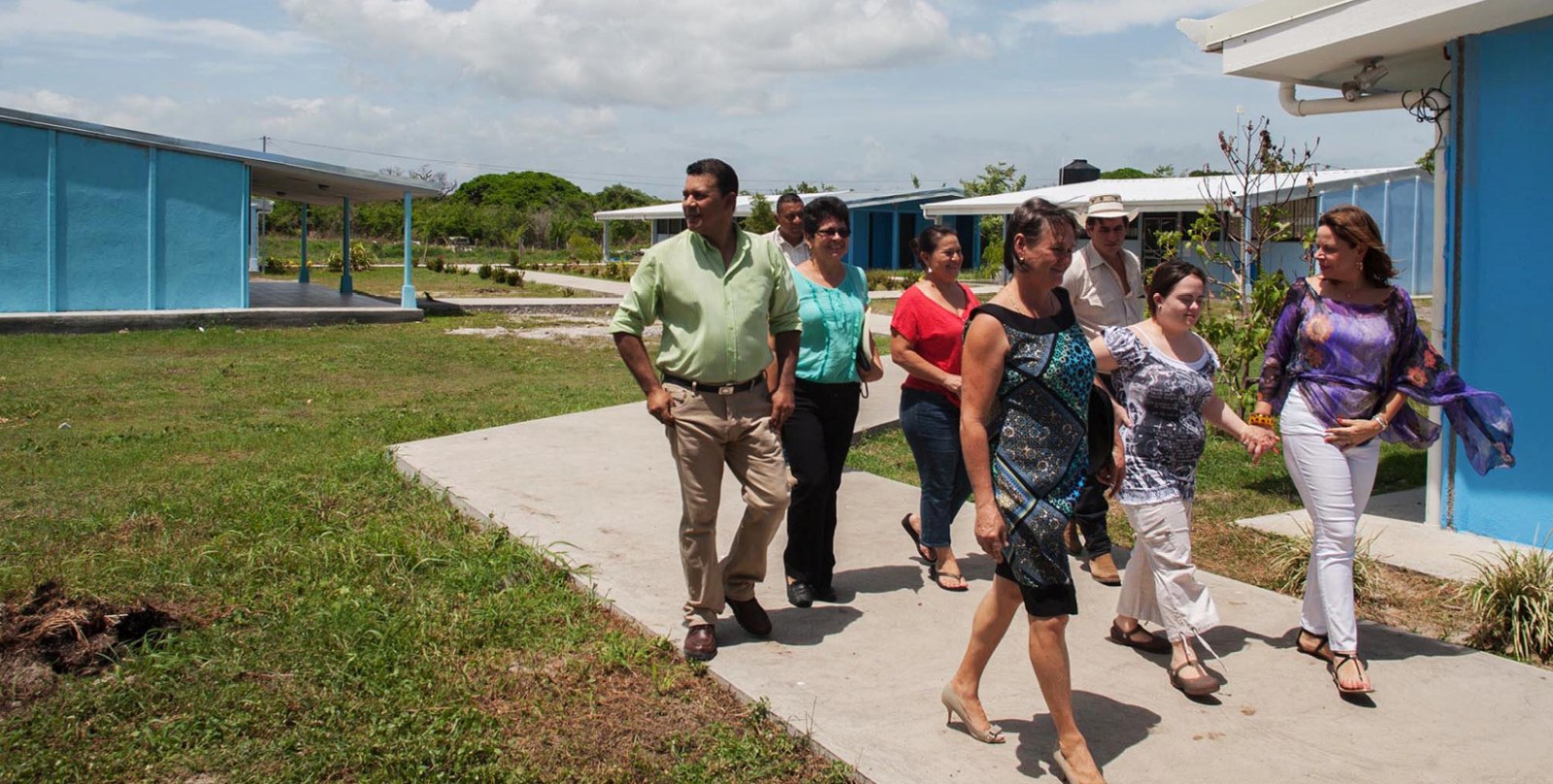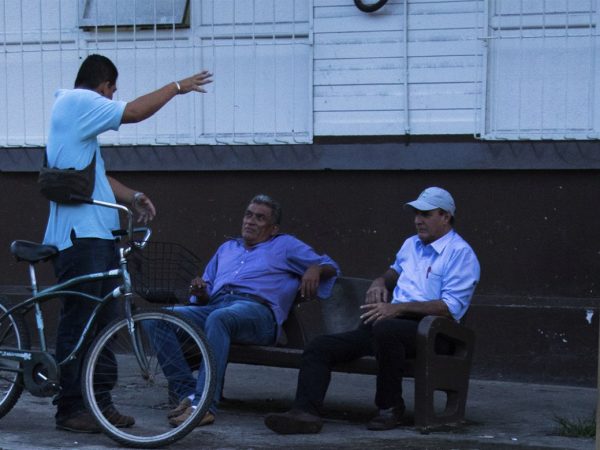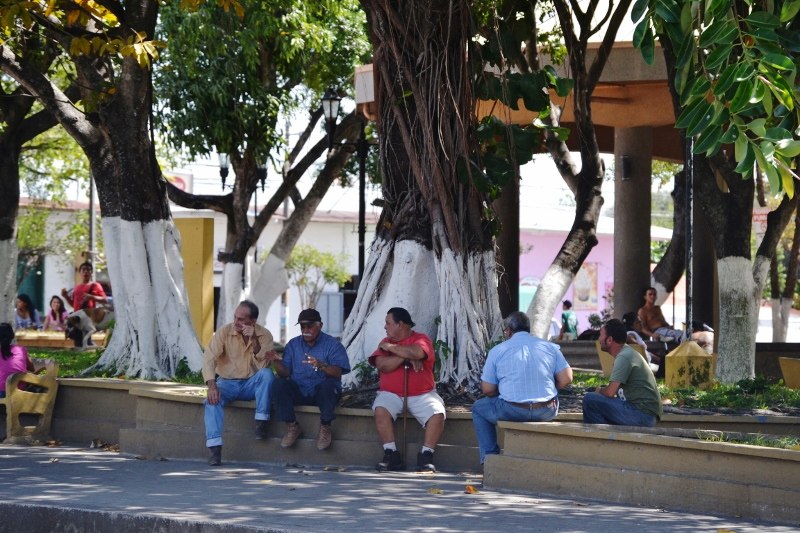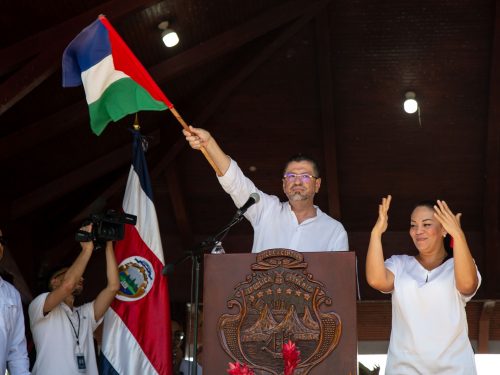
President Luis Guillermo Solis will present a proposal of solutions to the problem of arsenic-contaminated water when he visits Guanacaste on July 25, according to Vice President Ana Helena Chacon Echeverria during her visit to the canton of Bagaces on June 29.
The vice president met with the area’s municipal council, officials from the Costa Rican Institute of Aqueducts and Sewers (AyA – Instituto Costarricense de Acueductos y Alcantarillados), representatives of community groups and residents to discuss solutions to the problem of arsenic-contaminated water.
Jorge Luis Rojas, mayor of Bagaces, commented to The Voice of Guanacaste, “A lot was explained, especially by the people of AyA, about how they are installing technology to remove arsenic from the water.”
The official indicated that support was requested to expedite in whatever way possible the paperwork for the construction of the aqueduct of the Agua Limpia (Clean Water) project, which would bring water from the spring of Cuipilapa.
Chacon also participated in an activity organized by the Asociacion Voz del Pueblo de Bagaces (Village Voice of Bagaces Association) and a group of residents, during which the problem was explained. Natalia Salazar, a member of the Asociacion Voz del Pueblo de Bagaces, related that the vice president said she would relay the information and ideas to the president and central government authorities. There was also talk of reviving the AyA schedule for the project that would bring water from the Montaña de Agua spring, Salazar said. The activist commented that, at the meeting, the vice president said she was concerned that the Costa Rican Social Security Fund (CCSS – Caja Cosstarricense del Seguro Social) was not involved.
Emergency Decree Will Be Amended
In a press release issued by her office, the vice president stated, “We find that the problem (of arsenic) has been being worked on without giving appropriate solutions, so we agreed to develop a new Declaration of Emergency Executive Order that allows a clear and more forceful action plan to be generated.”
In March of 2012, the Ministry of Health and the presidential office issued a health emergency decree “to speed up the intervention at several sites where the aqueducts with problems were shut down, and temporary measures were taken to guarantee water service.”
To Salazar, that decree accomplishes nothing. “They are all possibilities. Nothing is concrete,” she said, adding that they are in expectation. “It’s a new government. We liked the part about reviving several things because it means that they won’t be starting from scratch. We really hope that the president comes with the proposals.”
However, Salazar commented that, as an organization that for years has been pushing for the authorities to present a definitive solution to the problem, they will not wait as long as they did before.
Arsenic Presence Scares Away Businesses
On the other hand, Mayor Jorge Luis Rojas mentioned the large need for employment in the canton. “In Bagaces, a lot of employment is needed for unskilled and skilled labor. We need employment for two or three categories. We need for companies to establish themselves in the canton because the companies themselves, knowing about the arsenic, may be wary of locating here,” he said.
In addition, Rojas indicated that they took advantage of the visit to make other requests of the vice president, such as support for the construction of the new school, which is already underway, and for another health clinic to be built in the area, in the neighborhood of San Antonio. Rojas explained that Chacón said she would do everything possible to support these initiatives.
Since 2009, AyA has been conducting studies on water quality in the area between Cañas and Bagaces in Guanacaste. The studies have reported amounts of arsenic above the World Health Organization’s standard of 10 micrograms per liter in the communities Hotel de of Cañas, Agua Caliente and Montenegro of Bagaces.
Residents of these areas should abstain from drinking the water or using it for food preparation since consumption of arsenic in drinking water can cause cancer and skin damage, developmental problems, cardiovascular disease, nerve tissue damage and diabetes.







Comments